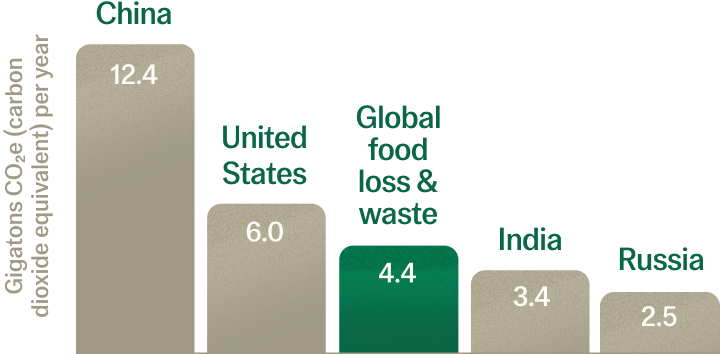
The impact
Food waste is driving climate change
If food waste were a country, it would be the third-largest greenhouse-gas emitter, behind China and the U.S. Preventing it is one of our best opportunities to slow climate change.


Your banana peels matter
Uneaten food is the most common material in landfills and most of it comes from our homes. When that food rots, it produces methane, a greenhouse gas that’s 80x more potent than CO₂ .


There's a better way
Based on our study, you can avoid about a half-ton of greenhouse-gas emissions per year with Mill. Instead of filling the air with methane, your kitchen scraps go right back into the food system.

Going full circle
The status quo is a straight line — right to the landfill. At Mill, we’re creating a closed loop. You produce food scraps. We process returned grounds into food for chickens. (According to the EPA, feeding animals is the best use for uneaten food, after feeding people). Those chickens lay eggs. And those eggshells can go right back in the bin. The circle continues.

